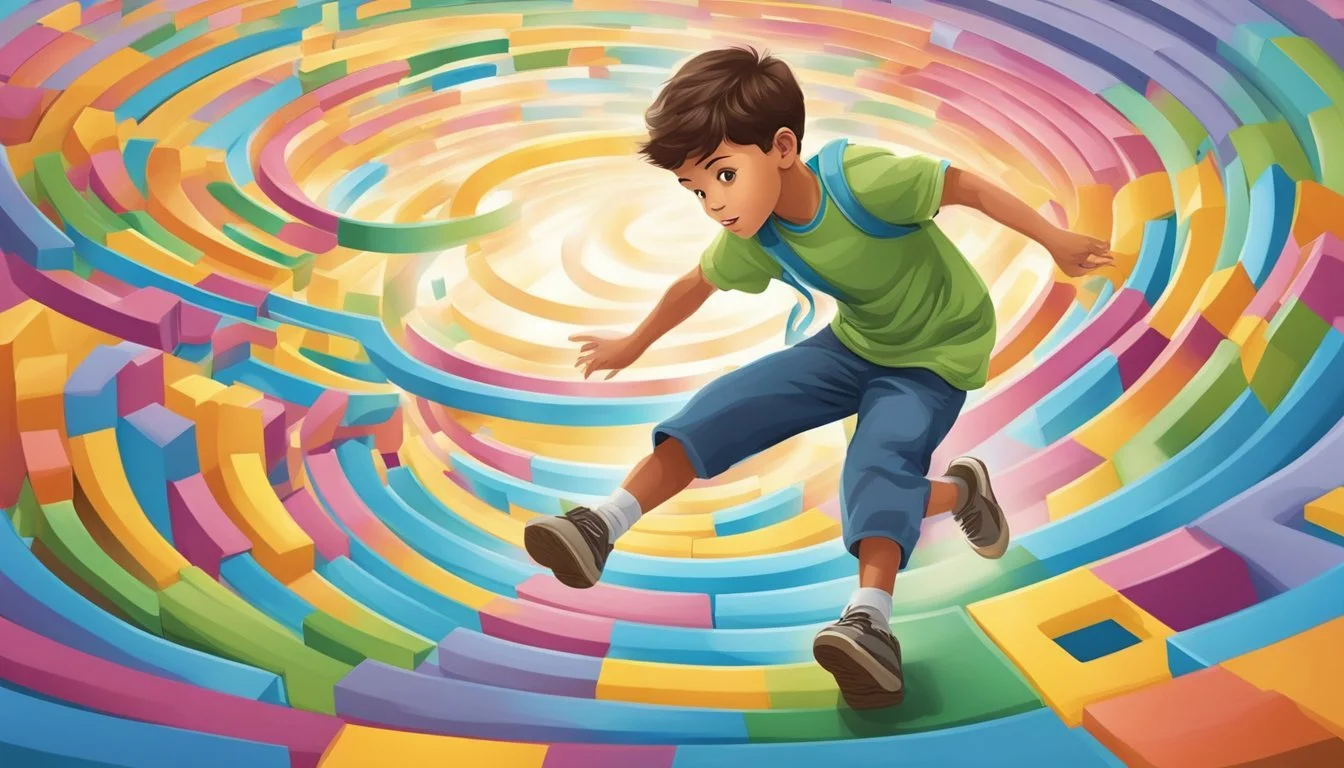Magic and Struggle: Harry Andersen's Learning Disability Journey
Overcoming Challenges in Education
Hans Christian Andersen, renowned for his captivating fairy tales, faced a lifelong struggle with learning disabilities. Despite these challenges, he channeled his experiences into magical stories that continue to enchant readers worldwide. Andersen's journey from a struggling student to a literary icon serves as an inspiring example of how disabilities can fuel creativity and resilience.
Andersen's tales often feature characters grappling with differences or disabilities, reflecting his own experiences. The Little Mermaid's quest for acceptance and The Ugly Duckling's transformation can be seen as metaphors for overcoming societal barriers. These stories resonate with readers of all ages, offering hope and understanding to those facing similar struggles.
Through his work, Andersen demonstrated that disabilities need not limit one's potential. His legacy encourages readers to look beyond surface appearances and embrace the unique qualities that make each individual special. Andersen's life and works continue to inspire discussions about inclusivity and the power of perseverance in the face of adversity.
The Early Life of Harry Andersen
Harry Andersen's childhood was marked by both challenges and creative sparks. His learning disability shaped his early experiences, while fairy tales fueled his budding imagination.
Childhood Struggles with Disability
Harry Andersen faced significant obstacles in his early years due to an undiagnosed learning disability. He struggled with reading and writing, often falling behind his peers in school. Teachers misinterpreted his difficulties as laziness or lack of intelligence.
Despite these challenges, Andersen showed remarkable creativity and problem-solving skills. He developed coping mechanisms and alternative ways of learning to compensate for his disability.
His parents provided crucial support, advocating for him at school and encouraging his strengths. This nurturing environment helped Andersen build resilience and self-confidence.
Influences of Fairy Tales on Early Imagination
Fairy tales played a pivotal role in shaping Andersen's imagination during childhood. Unable to read fluently, he relied on oral storytelling and illustrations to engage with these magical worlds.
His parents and grandparents often read fairy tales aloud, bringing characters to life through voices and gestures. This immersive experience sparked Andersen's love for performance and storytelling.
Classic tales like "Jack and the Beanstalk" and "Cinderella" captured his interest, inspiring creative play and homemade puppet shows. These stories provided an escape from academic struggles and nurtured his artistic side.
Andersen's early exposure to fairy tales laid the foundation for his future career in magic and entertainment. The blend of wonder, transformation, and problem-solving in these stories resonated deeply with him.
Exploring Andersen's Literary Influences
Hans Christian Andersen drew inspiration from a variety of sources, shaping his unique storytelling style. His work was influenced by children's literature, contemporary authors, and emerging genres of his time.
Hans Christian Andersen and Children's Texts
Andersen's fairy tales revolutionized children's literature. He transformed traditional folk stories into complex narratives with depth and moral lessons. Unlike earlier writers who simplified tales for young readers, Andersen crafted stories that appealed to both children and adults.
His characters often faced hardships, reflecting real-world struggles. This approach added authenticity to his works, making them relatable across generations. Andersen's tales like "The Little Mermaid" and "The Ugly Duckling" became timeless classics, blending fantasy with universal truths.
The author's innovative storytelling techniques influenced future generations of children's writers. His use of vivid imagery and emotional depth set new standards in the genre.
Narratives by Charles Dickens
Charles Dickens, a contemporary of Andersen, significantly impacted his writing style. Both authors shared a keen interest in social issues and the struggles of everyday people. Dickens' portrayal of Victorian society resonated with Andersen's own observations of class disparities.
Andersen admired Dickens' ability to create memorable characters and intricate plots. This admiration is evident in Andersen's more complex fairy tales, which often featured multi-layered narratives similar to Dickens' works.
The two authors met in 1847, forming a mutual respect for each other's writing. This encounter further solidified Dickens' influence on Andersen's literary endeavors.
Themes in Young Adult Literature
While Andersen predated the formal category of young adult literature, his works laid foundational themes for the genre. His stories often explored coming-of-age experiences, identity struggles, and the challenges of growing up.
Tales like "The Snow Queen" delved into themes of friendship, loyalty, and personal growth - concepts that became central to young adult literature. Andersen's narratives frequently featured young protagonists facing moral dilemmas and life-changing decisions.
His exploration of complex emotions and inner conflicts in characters like the Little Mermaid paved the way for more nuanced portrayals of adolescent experiences in literature. These themes continue to resonate in modern young adult fiction, cementing Andersen's lasting influence on the genre.
Disability Representation in Literature
Disability representation in literature has evolved significantly over time. Authors increasingly portray disabled characters with depth and nuance, challenging societal perceptions.
Disabled Characters and Identity
Disabled characters in literature often grapple with complex identity issues. Many stories explore how disability shapes self-perception and interactions with others. Some works depict characters embracing their disabilities as integral parts of who they are.
Authors like Hans Christian Andersen have used non-human characters with disabilities to examine these themes. His tales feature protagonists who navigate physical differences and societal expectations.
Modern literature increasingly presents disabled characters as multifaceted individuals with agency. Their disabilities inform but do not solely define their identities or story arcs.
Ableist Ideology and Bodily Differences
Literature can both reinforce and challenge ableist ideologies. Some texts perpetuate harmful stereotypes about bodily differences. Others critically examine societal attitudes toward disability.
Fairy tales often use physical differences as metaphors for moral qualities. This can promote problematic associations between appearance and character.
Contemporary works increasingly critique these tropes. They highlight how societal barriers, not individual impairments, create disability.
Critical disability theory provides tools to analyze power dynamics in texts. It examines how literature constructs notions of "able-bodiedness" and "normalcy."
Breaking Stereotypes Through Fantasy
Fantasy literature offers unique opportunities to challenge disability stereotypes. Magical worlds can reframe bodily differences as sources of power or insight.
Some fantasy works reimagine disability as an alternate form of ability. Characters may possess extraordinary gifts linked to their impairments.
Non-human characters allow authors to explore disability themes without real-world constraints. Anthropomorphic animals or magical creatures can embody diverse physical and cognitive experiences.
Fantasy settings also permit radical reimaginings of societal structures. Authors can craft worlds free from real-world ableist assumptions and barriers.
Critical Perspectives on Andersen's Work
Andersen's tales have been subject to various critical analyses examining their sociopolitical implications, representations of diversity, and applications of disability theory. These perspectives shed light on the complex layers within his storytelling.
Discourses of Power and Sociopolitical Implications
Andersen's works often reflect power dynamics present in society. His tales frequently depict characters struggling against societal norms or expectations. Critics have noted how stories like "The Ugly Duckling" and "The Little Mermaid" explore themes of social mobility and identity.
The portrayal of class structures in Andersen's tales has been a focal point for many scholars. His stories often feature protagonists from humble backgrounds aspiring to improve their social standing.
Some critics argue that Andersen's tales reinforce existing power structures, while others see them as subtle critiques of societal inequalities. This debate highlights the complexity of interpreting Andersen's work through a sociopolitical lens.
Diversity Issues and Inclusivity
Andersen's tales have been scrutinized for their representation of diverse characters and cultures. While some stories feature protagonists from varied backgrounds, critics have pointed out limitations in the depth and authenticity of these portrayals.
The treatment of gender roles in Andersen's works has been a topic of ongoing discussion. Female characters often face significant hardships or make great sacrifices, raising questions about gender expectations in his narratives.
Critics have also examined the cultural specificity of Andersen's tales and their adaptability to different contexts. This analysis considers how well his stories translate across cultural boundaries and resonate with diverse audiences.
Critical Disability Theory Applications
Disability studies scholars have found rich material in Andersen's works. Many of his characters experience physical or social differences that can be interpreted through the lens of disability theory.
Stories like "The Little Mermaid" have been analyzed for their portrayal of bodily transformation and the social implications of physical difference. These interpretations offer new perspectives on Andersen's exploration of identity and belonging.
Critics applying disability theory highlight how Andersen's tales often present disability as a challenge to be overcome. This framing has been both praised for its empowering potential and critiqued for potentially reinforcing ableist attitudes.
The emotional and psychological aspects of difference in Andersen's stories provide another avenue for critical disability analysis. Characters' internal struggles often mirror societal attitudes towards disability and difference.
Challenging the Traditional Narrative
Harry Andersen's story confronts established perspectives on disability in literature. It explores the complexities of identity, societal norms, and personal agency for characters with learning disabilities.
Otherness and the Concept of 'Normal'
Harry's experiences highlight the arbitrary nature of 'normalcy' in society. His magical abilities contrast with his learning challenges, blurring the line between extraordinary and different. This duality forces readers to question preconceived notions of ability and worth.
The narrative presents Harry's struggles not as inherent flaws, but as mismatches with a rigid educational system. It emphasizes the diversity of learning styles and cognitive processes, challenging the idea of a single 'normal' way of thinking or learning.
Resisting the Cure Narrative
The story rejects the common trope of 'fixing' or 'curing' disabilities. Instead, it focuses on Harry's growth and adaptation. His learning disability is portrayed as an integral part of his identity, not a problem to be solved.
Harry develops coping strategies and finds supportive environments that accommodate his needs. This approach emphasizes empowerment and self-acceptance rather than conformity to external standards.
The narrative explores how magical education can be more inclusive, suggesting broader implications for real-world educational practices.
Sexuality and Consent in Character Development
Harry's journey includes navigating romantic relationships and sexual identity. The story addresses the often-overlooked aspect of sexuality in characters with disabilities, challenging stereotypes of asexuality or infantilization.
Consent is carefully depicted, acknowledging the complexities of decision-making for individuals with learning disabilities. The narrative explores how Harry develops agency in his personal relationships.
These elements add depth to Harry's character, presenting him as a multifaceted individual with desires, boundaries, and autonomy.
Andersen's Legacy and Impact
Hans Christian Andersen's tales continue to shape literature, education, and societal views on disability. His stories resonate across generations, influencing modern media and fostering empathy.
Modern Interpretations of Andersen's Tales
Andersen's stories have found new life in contemporary adaptations. "The Little Mermaid" has seen numerous film and stage versions, often emphasizing themes of self-acceptance. "The Ugly Duckling" remains a powerful metaphor for personal transformation and embracing one's unique qualities.
These modern retellings often highlight the resilience of characters facing adversity. Filmmakers and authors have reimagined "The Steadfast Tin Soldier," focusing on the character's determination despite physical differences.
Educational Curricula and Disability Awareness
Schools worldwide incorporate Andersen's tales into their curricula to teach empathy and inclusivity. "Thumbelina" is used to discuss size differences and acceptance. Teachers use "The Ugly Duckling" to address bullying and self-esteem issues.
These stories provide a platform for discussing disabilities in a relatable context. Students learn about resilience through characters who overcome challenges. Some educators create lesson plans centered on Andersen's life, exploring his own learning difficulties.
Perception of Disabled Characters Today
Andersen's portrayal of characters with differences has influenced modern representations of disability in media. His nuanced approach to characters like the tin soldier has encouraged more complex depictions of disability in literature and film.
Contemporary authors often draw inspiration from Andersen's work when creating disabled characters. There's a growing trend to portray these characters as multidimensional, focusing on their strengths and abilities rather than limitations.
The media industry has become more conscious of accurate representation, partly due to the lasting impact of Andersen's empathetic storytelling.






